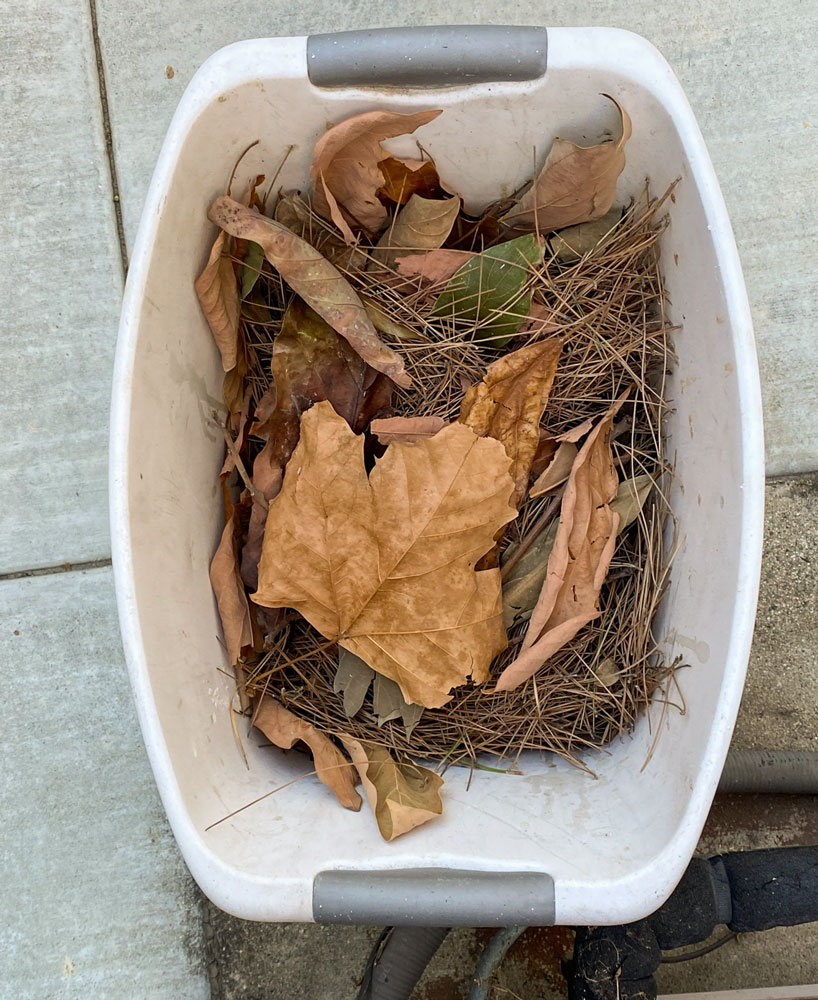
SoCal Beekeeping
Beginning Beekeeping
Lighting and Using the Smoker
P. Michael Henderson
October 20, 2020
SAFETY WARNING: The smoker gets hot in use. Be careful handing it when it's burning. Your gloves will help protect you but carelessness could lead to ruining a good set of gloves, as well as burning your fingers. You could also burn a hole in your suit, your gloves, or your veil.
+++++++++++++++++++++++++++++++++++++++
Perhaps your most important beekeeping tool is your smoker. Proper use of the smoker will calm the bees in a hive and make a hive inspection easier for both you and the bees. I discussed the smoker earlier in the Equipment discussion. I'm going to discuss lighting and using the smoker here.
As an aside, you should do your hive inspections, or honey harvest, after the forager bees have left the hive - wait until a couple of hours after sunrise. The young nurse bees are much less likely to be defensive than the older forager bees. And, in any case, there will be fewer bees in the hive which will also make your job easier.
[Side note: Don't go into your hive after dark. Bees don't fly (much) after dark but they crawl. They will get on your suit and crawl all over your suit until they find an opening - then they'll crawl all over YOU. Having bees crawling up your legs is not a pleasent feeling - you just don't know where they're heading and what they're going to do when they get there:-). If you didn't zip your veil on tightly, they'll be inside your veil, maybe crawling on your face.]
Before you can light the smoker you need some fuel and that's what I'm going to start with.
Leaves and Dry Grass
The traditional fuel used in the smoker was leaves and dry grass, and maybe some tree bark. And they work very well today. But you have to collect that fuel from some place. If you live on a large property you may have lots of leaves and dry grass available to you. You could collect a significant amount and store it in a plastic garden bag. This past week we had some high Santa Ana winds which blew down quite a bit of leaves. I collected a small amount to use here.

To light it, I start with some crumpled newspaper. You don't need a lot of newspaper. I use one sheet, that is, the size of the front page, with the back page torn off. The goal is to get your fire going from the bottom. You can't light a smoker effectively from the top.

I light the paper outside of the smoker but you can do it inside the smoker if you prefer.
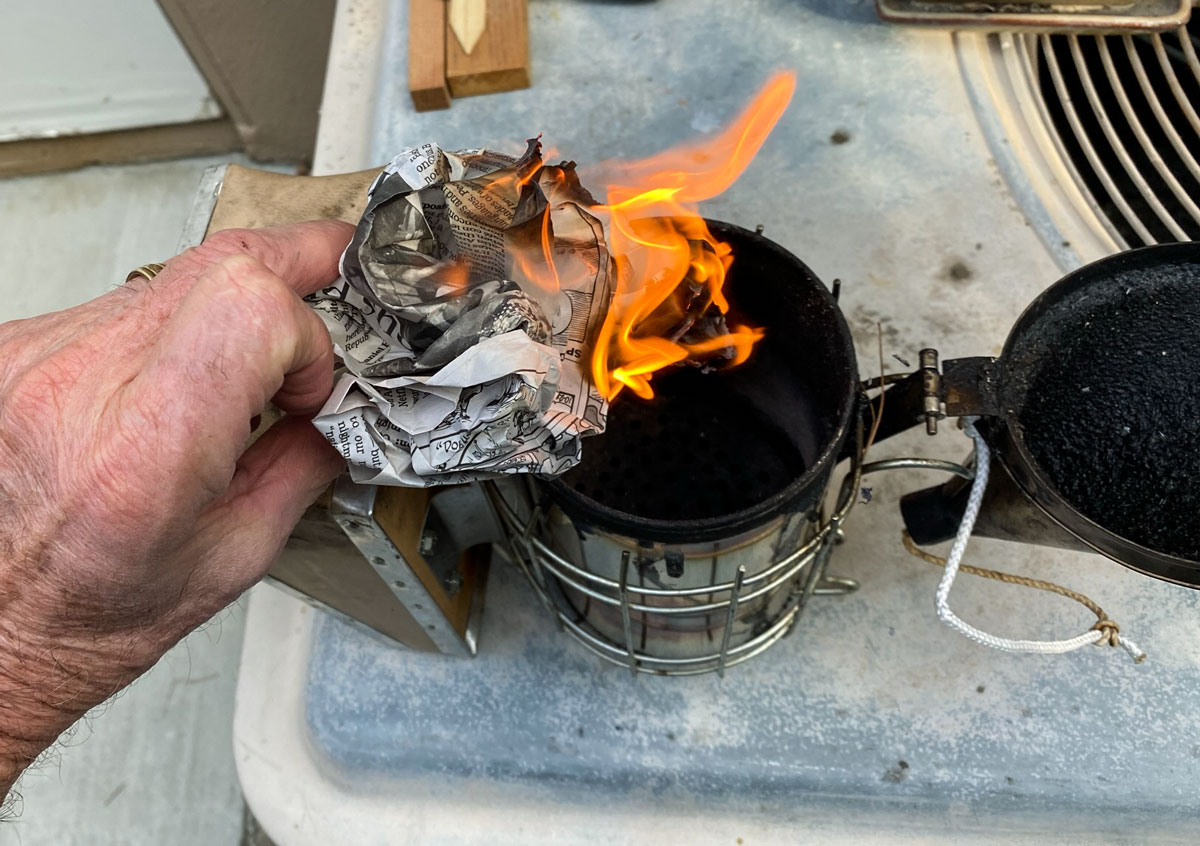
Push it into the smoker with the fire down. You can use your hive tool to push the wad of paper to the bottom.
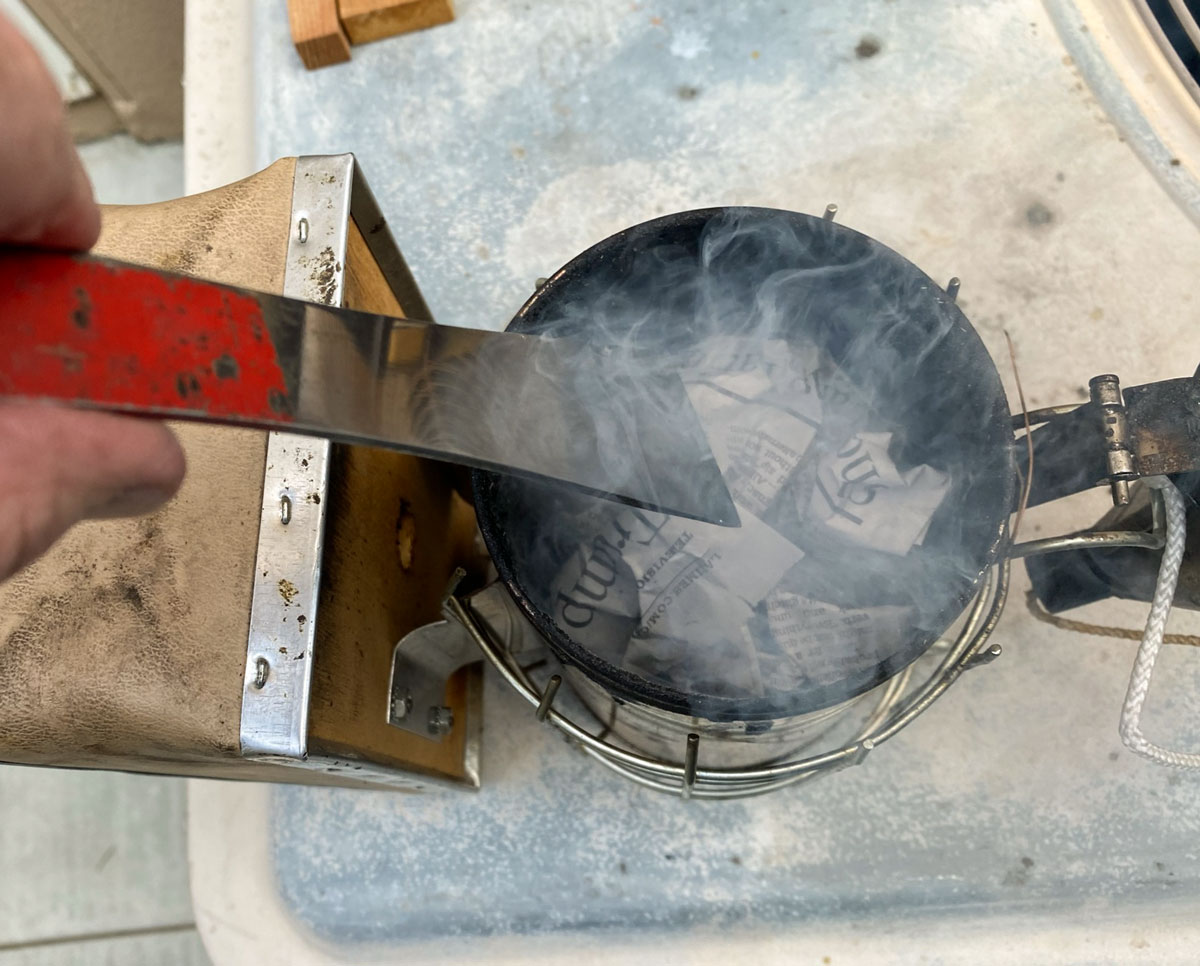
Pump your bellows until the paper is burning well. Then add some of your leaves and dry grass. Use your hive tool to push it down.
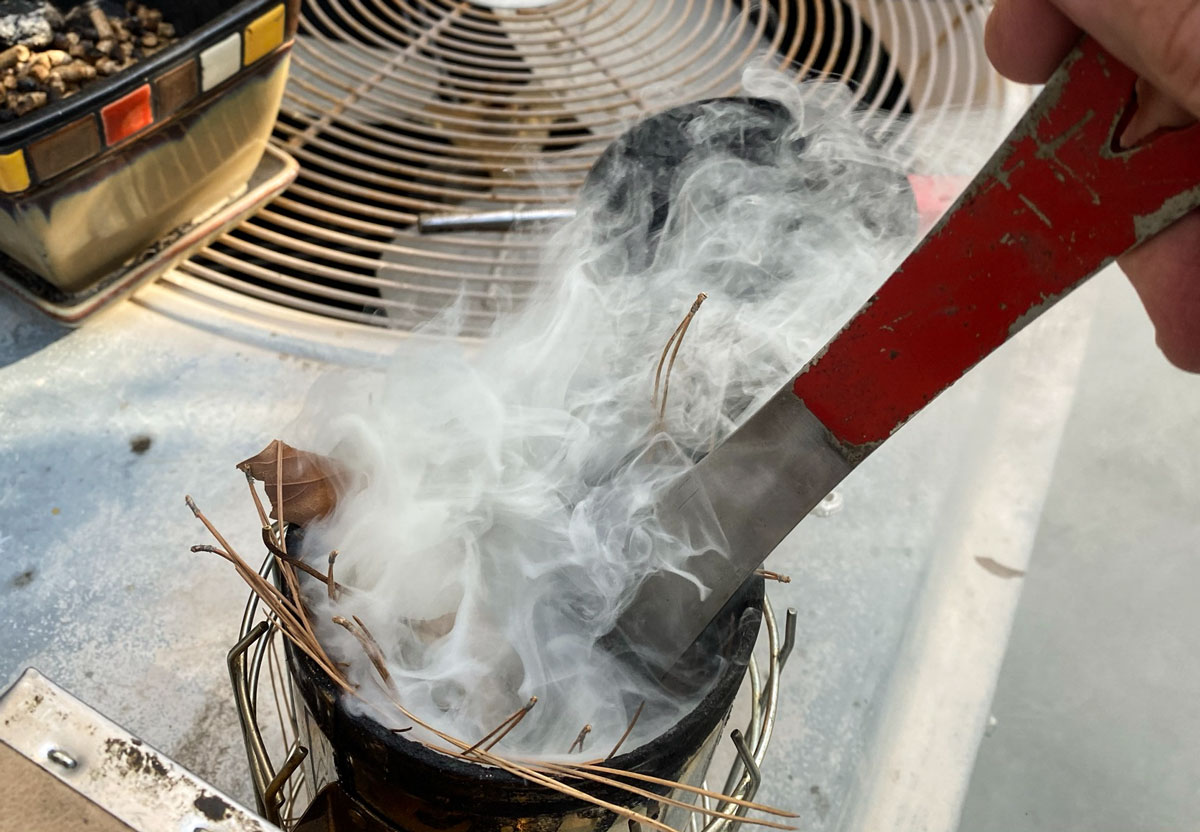
Pump the bellows until you get a good fire going.
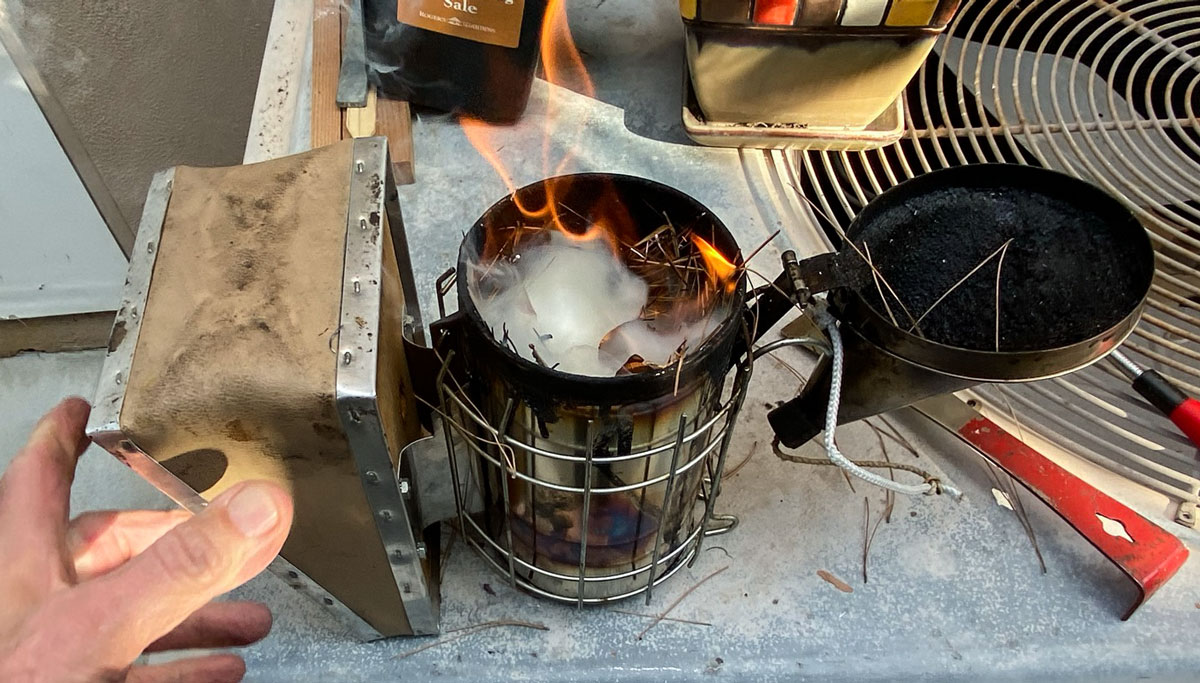
Then add more leaves and dry grass, pushing it down with your hive tool.

Once you have enough fuel in the smoker, close the lid and you should have lots of cool white smoke.
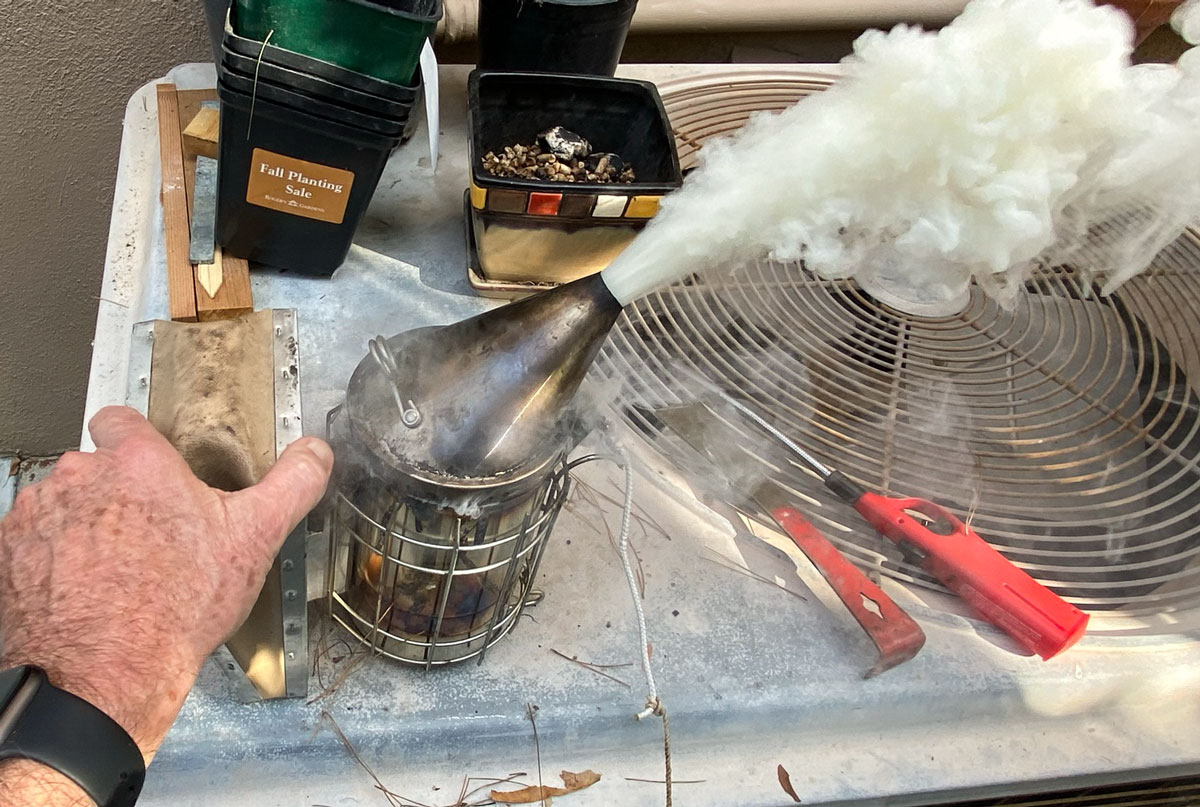
While you're in the bee yard, pump the bellows every now and then to make sure the fuel is still smoldering. Pumping the bellows will revive the fire.
I don't often use this method with my smoker. While it provides lots of good smoke, I have to collect fuel and I don't like the process of getting the fire going. I prefer one of the techniques shown below. They're not as inexpensive as the leaves and dry grass but I find them easier to use and reliable.
Fire Starter
The beekeeping supply companies all sell some version of a "fire starter". These are short pellets, about 1 1/2 inches long and about 1/4 inch in diameter. They're made of some material that lights easily and will smolder (without flame) and give off a clean white smoke. I suppose they're designed to help start some other fuel in a smoker but I just use them by themselves.
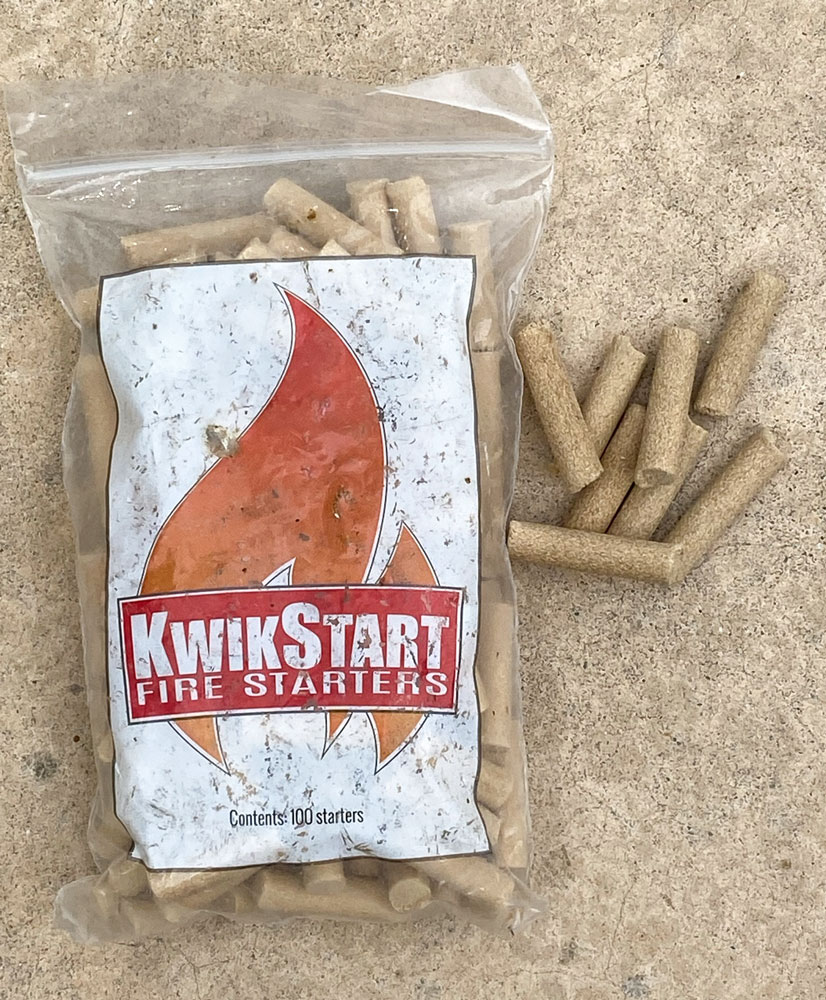
If you only have one hive, take about three of the pellets and light them with a "fireplace lighter". Once they're lit, just drop them in the smoker, pump the bellows a few times and you have clean white smoke. They don't last a long time but they usually give you enough time to do what you need in one hive. You can keep a couple of extra pellets and drop them through the spout if you think you need more time. Tilt the smoker to the side so the clump together and the new pellets will light from the previous ones.
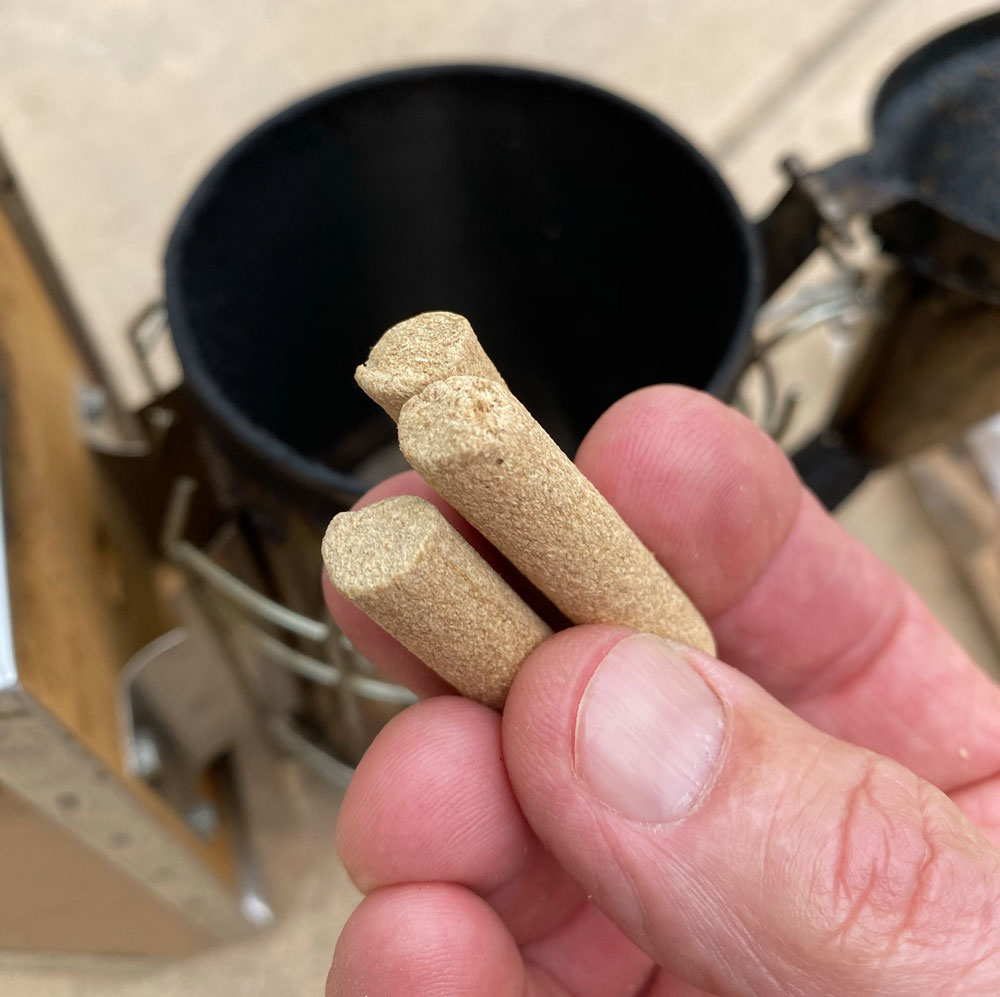
Here are the pellets after lighting. You could put some leaves and dry grass on top of them to make the smoke last longer.

They produce a lot of clean white smoke.
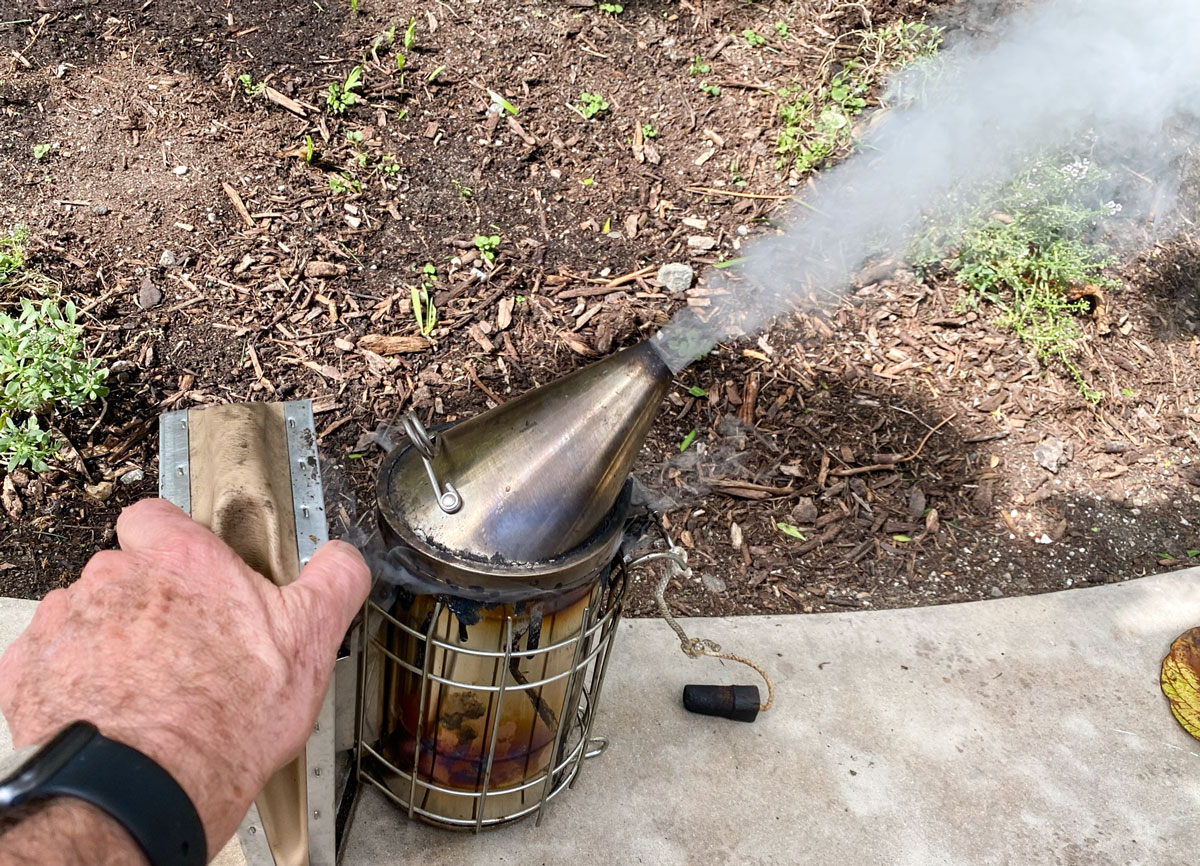
Some people think the pellets look like short cigarettes, and maybe they do. But whatever you do, don't use real cigarettes to make smoke. Of course, cigarettes are expensive so maybe no one would think of this, but don't do it. You want clean white smoke and cigarette smoke has substances in it that could harm the bees.
Burlap
Another good fuel is burlap. Years ago, all farms had old burlap bags that animal feed came in. Today, you can purchase burlap fairly cheaply and it makes good smoke. Cut it into patches about a foot square, or a bit larger. Either roll up the burlap lightly or just crumple it up. Use your fireplace lighter and light one end. Carefully put the burlap into the smoker with the burning end at the bottom. Pump the bellows and you'll have clean white smoke, especially after you close the spout lid.
In this picture I'm only using a small amount of burlap. I'd use more if I was going to the bee yard.
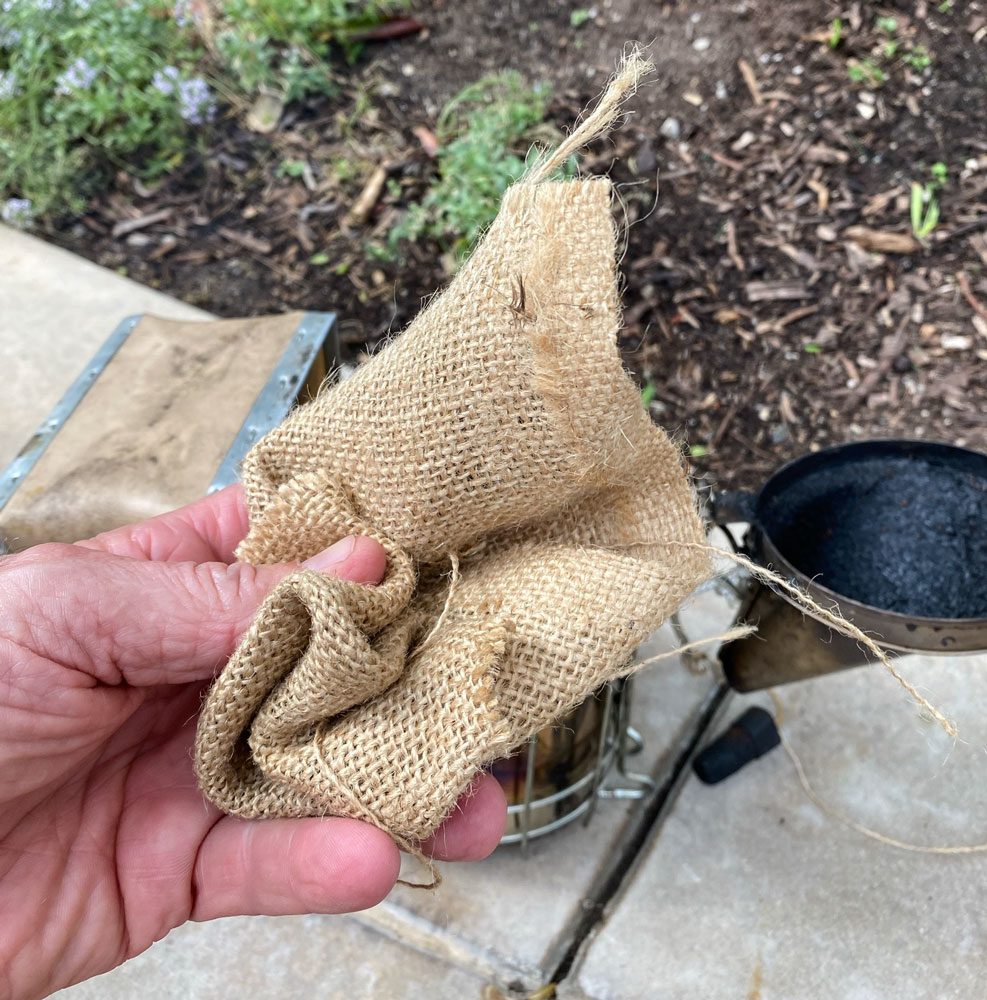
Here, I lit the burlap. When I put it in the smoker, I don't want it burning - I just want it smoldering.

It will produce a nice, clean white smoke. Be careful with how much you pump your bellows - you don't want the burlap to ignite to fire again, you just want it smoking.
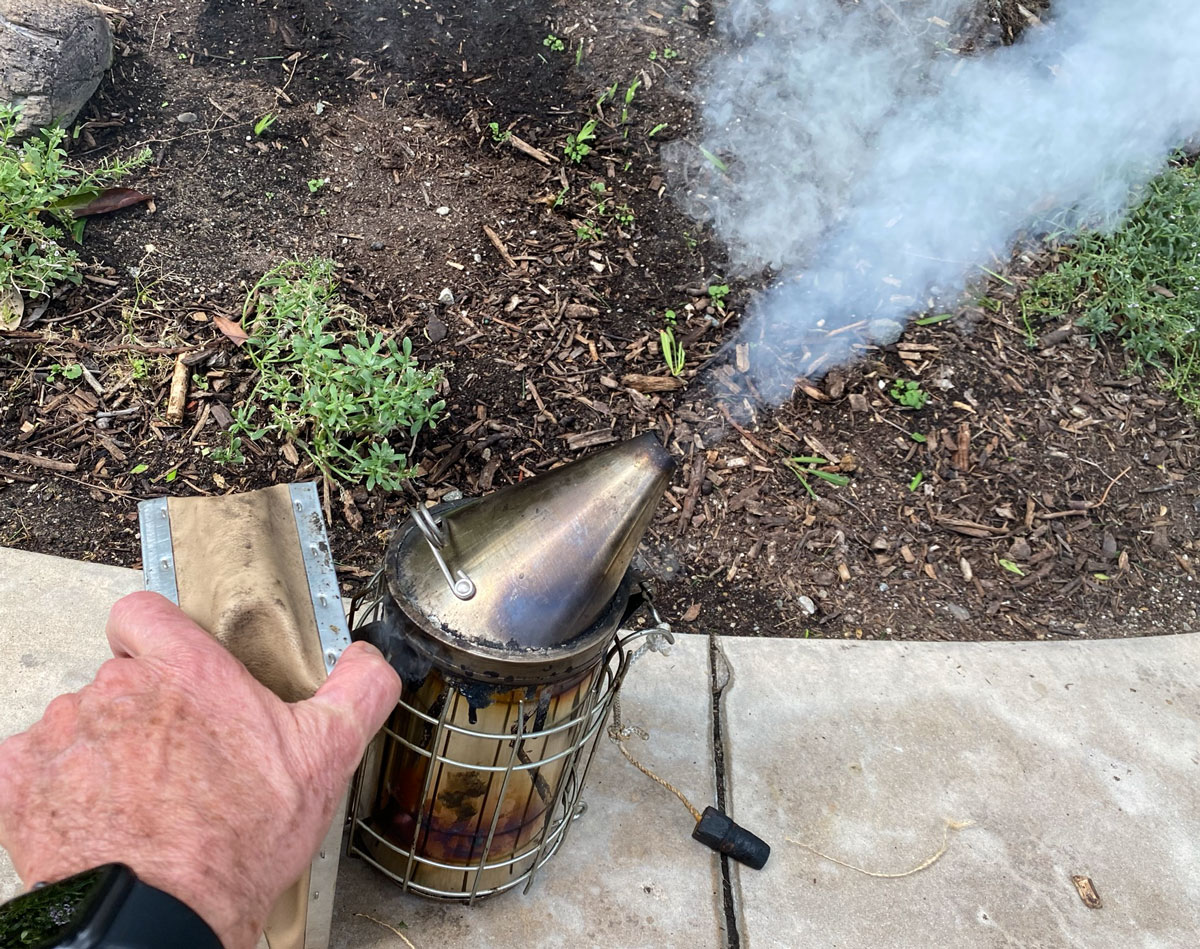
Make sure you use "clean" burlap. The burlap should not have substances on it which will harm the bees when burned. This would only be true if the burlap came from a sack containing some toxic material. I bought a roll of burlap off the Internet and cut that up into pieces.
There was a good article in the October issue of the American Bee Journal by Tina Sebestyen on using cardboard, burlap, and wood chips as a fuel for a smoker (pages 1149-1150). If you don't have access to the magazine I can make you a copy.
Wood Pellets
This is the one I use most often. They make wood pellets for wood pellet stoves. The stoves have a container for the pellets and an auger to deliver the pellets to the combustion chamber. A thermostat controls the auger to keep the fire burning enough to keep the room at a chosen temperature.
You can't purchase those wood pellets in Orange County - wood fires are prohibited for air quality reasons. But if you drive to Riverside County, specifically to Tractor Supply in Norco, you can buy the wood pellets by the 40 pound bag for about $5.50/bag. A 40 pound bag will last you a long time. Here's a bag I purchased some time ago - it's still about half full.
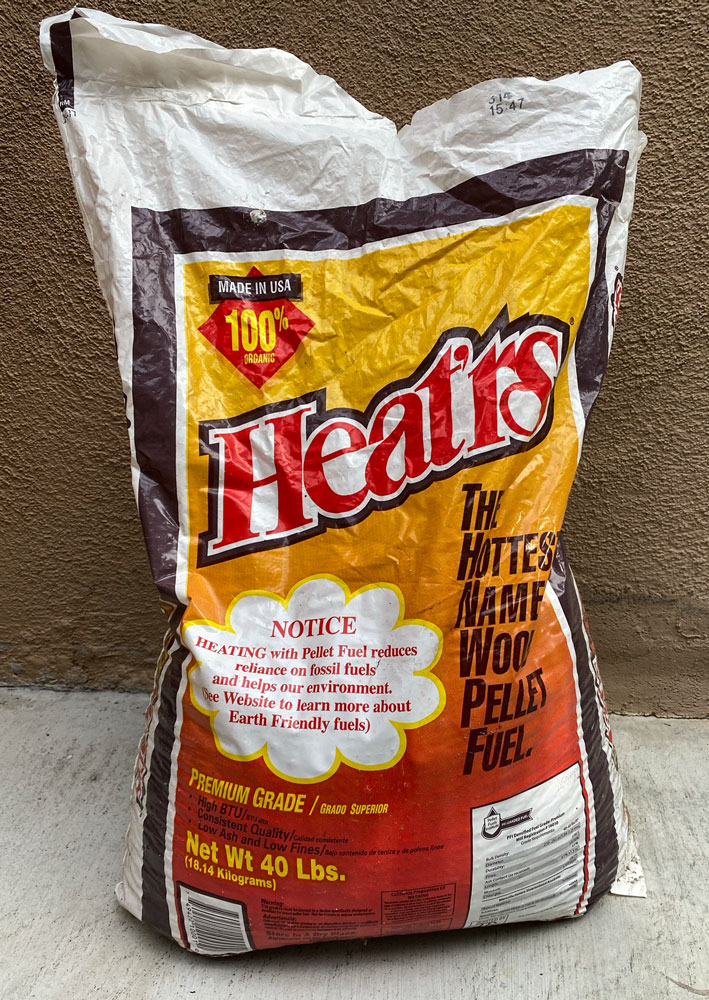
Now, how to light the pellets. Some beekeepers use a propane or Mapp torch and just light the pellets that way.
I found that if I take a charcoal briquette or two and light that with a propane or Mapp torch, then allow the charcoal to get burning well, I can dump a double handful of wood pellets over the charcoal and the charcoal will ignite the wood pellets. Actually, the pellets don't burn with a flame, the just smolder and smoke. This gives a clean white smoke which lasts a long time.
I'm going to use two briquettes and some of these wood pellets.

This is the torch I use to light the briquettes.
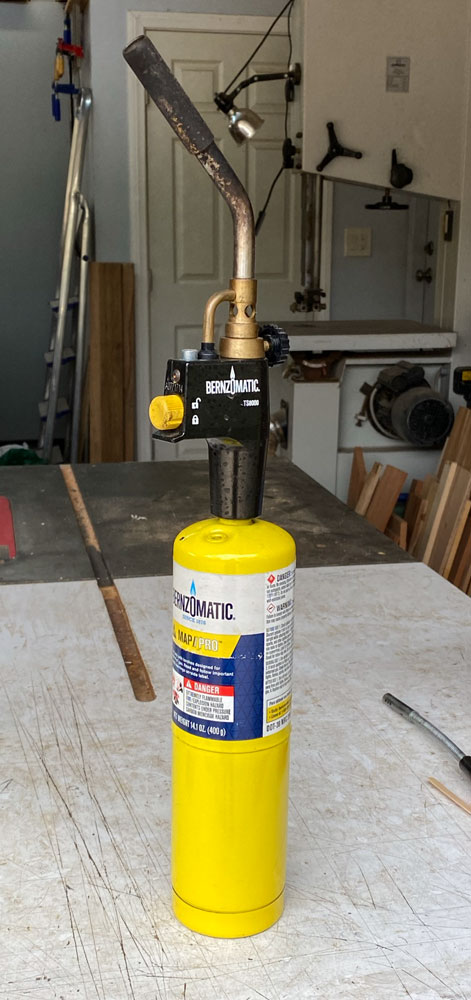
I put two briquettes in the bottom of the smoker. I usually use the briquette remains from my previous session.

Lighting the briquettes with the torch. You can use other techniques but this is fast. I usually light the briquettes before I go inside to get my bee suit. By the time I'm dressed the briquettes are going well.
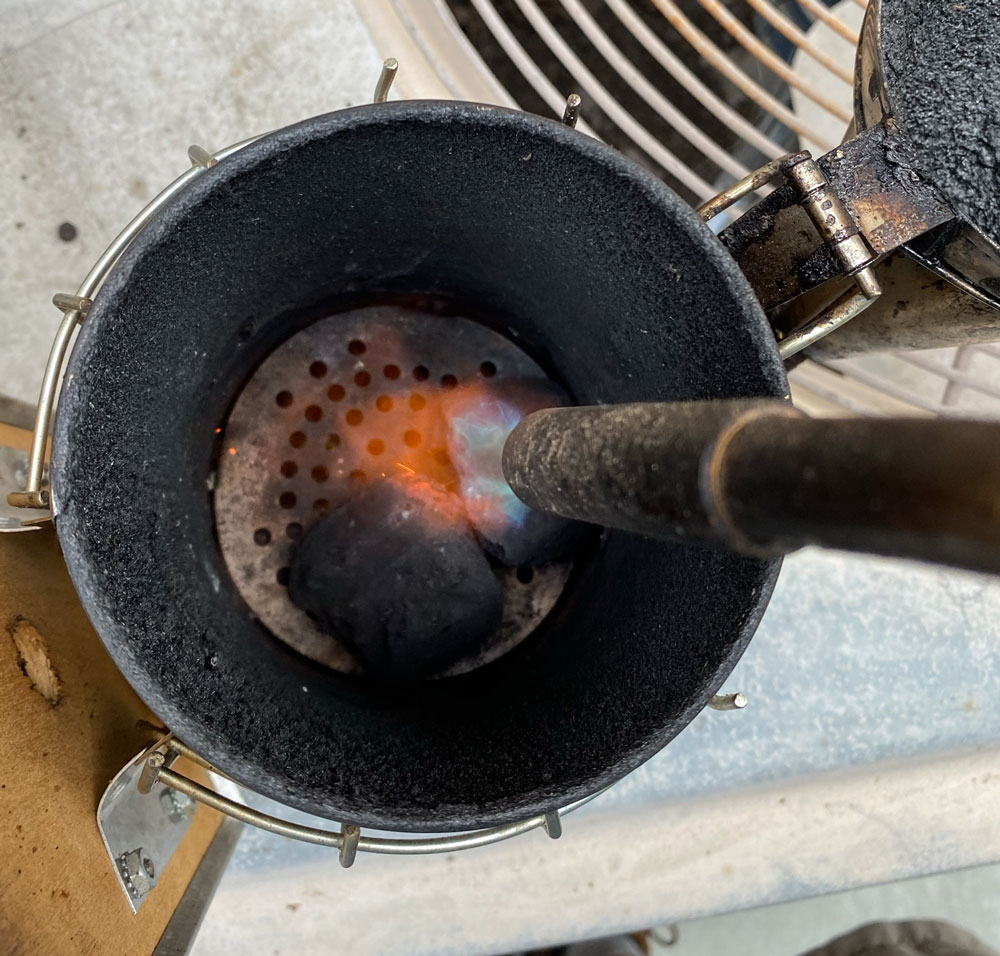
Here the briquettes are burning well. It takes maybe 5 to 10 minutes for them to reach this state.
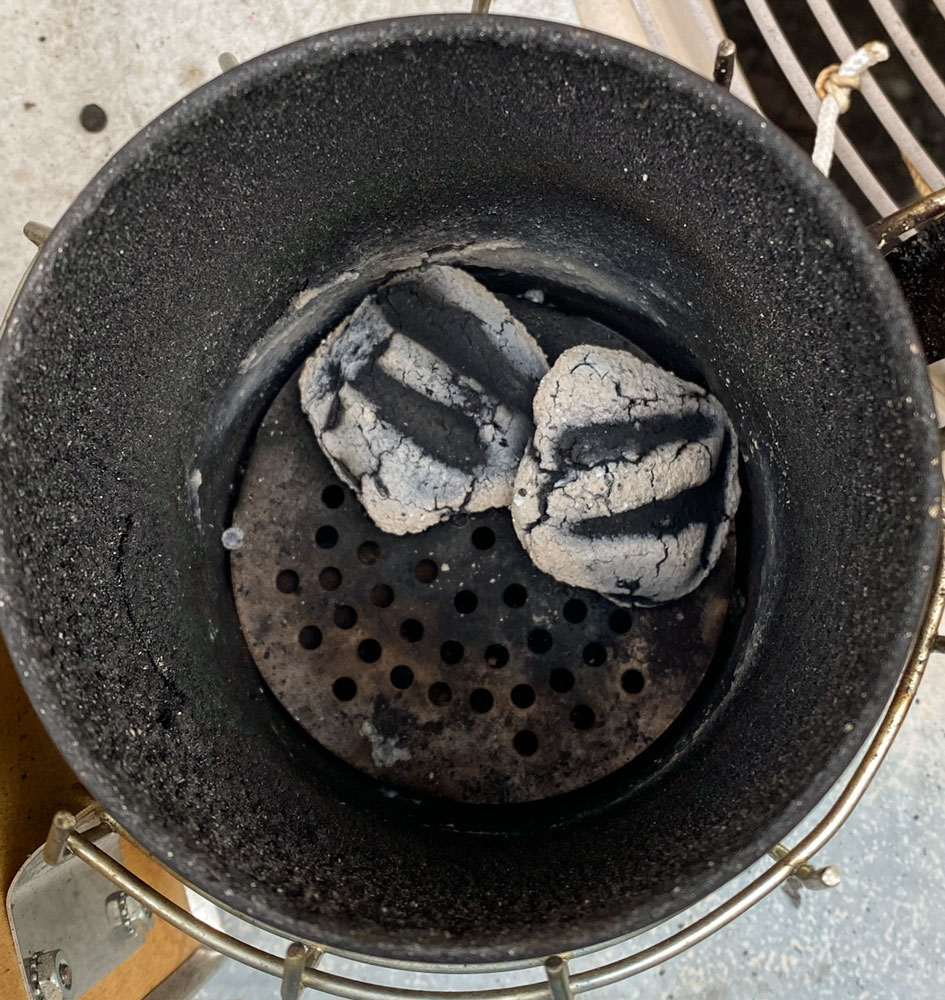
I then dump a double handful of wood pellets on top of the briquettes. Usually, I use the pellets from my previous smoker use. It takes a few minutes for the pellets to get going. I find that by the time I walk to the bee yard, pumping the bellows as I walk, the pellets have stared burning and I have good smoke.
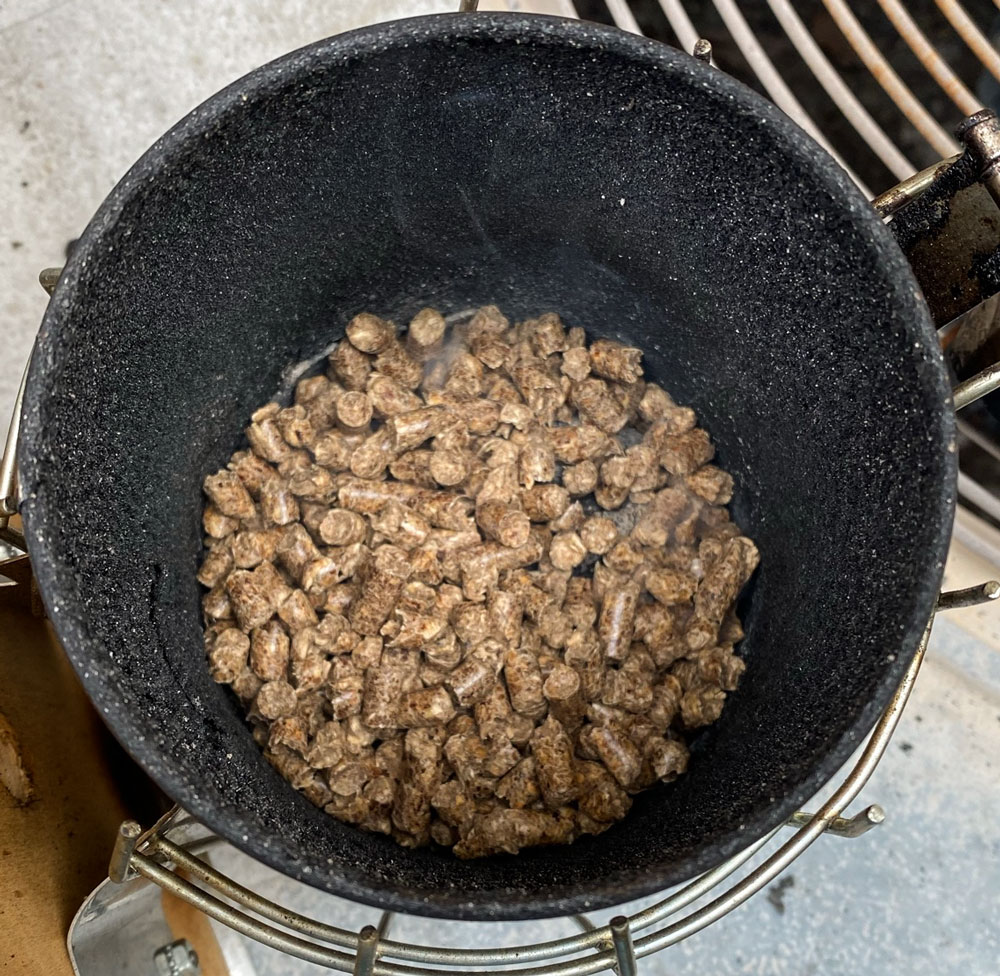
This gives a clean white smoke and the fuel lasts for a long time. If you're in the beeyard for an extended period of time you'll need to work the bellows a few times now and then or the smoker might go out. But otherwise, you can keep the smoker going for an hour or more.
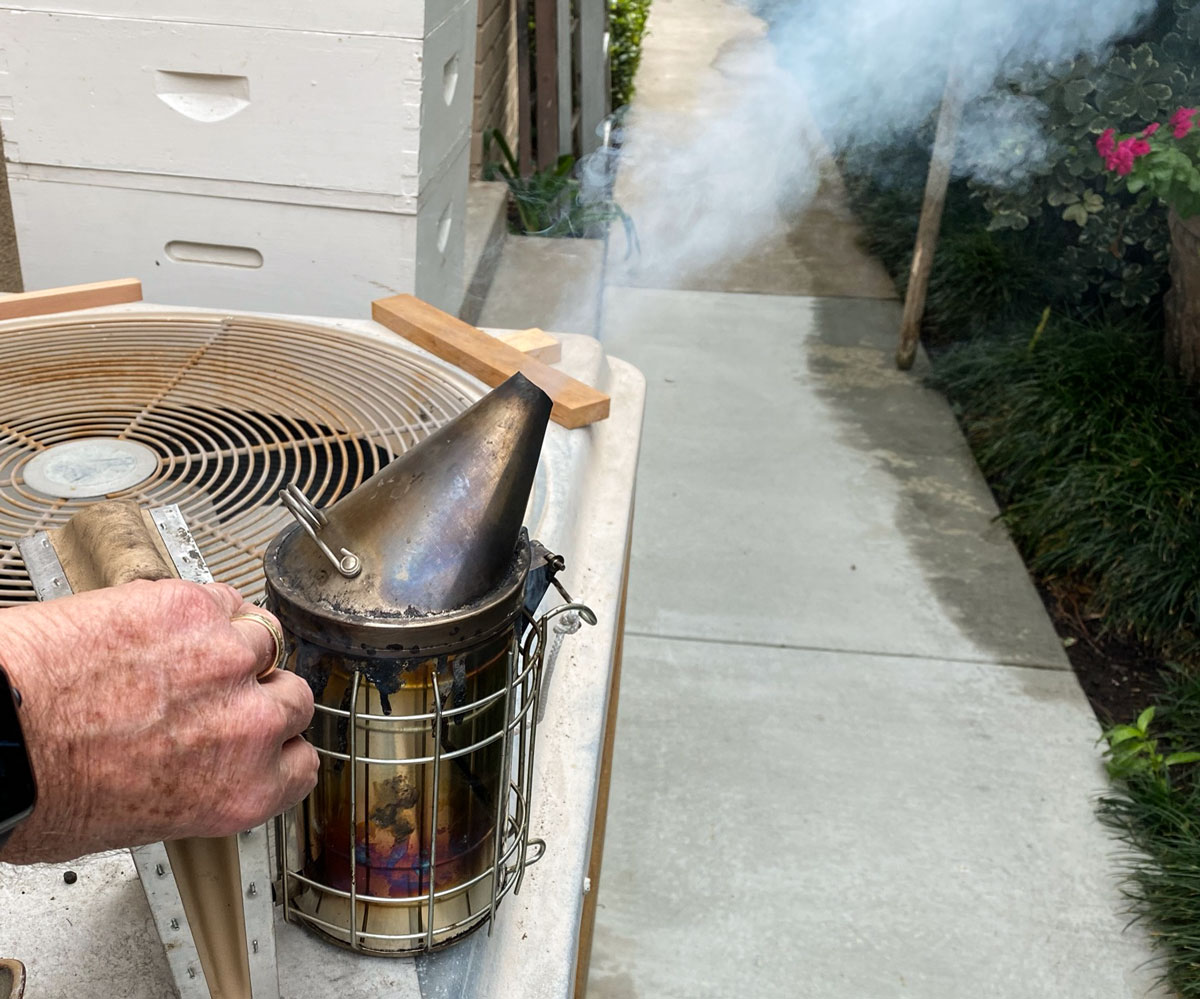
When I'm finished, I put the plug in the spout and the smoker goes out. The remains of the briquettes and the pellets are used the next time I light the smoker.
++++++++++++++++++++++++++++++++++++++
Using the Smoker
So how do you use the smoker on the hive (no matter what fuel you use)? I begin by putting some smoke into the entrance of the hive. My bees are pretty docile so I don't have to smoke them a whole lot. I sort of felt bad for them in this picture taking session because the photographer wanted a lot of pictures which meant a lot of smoking the bees.
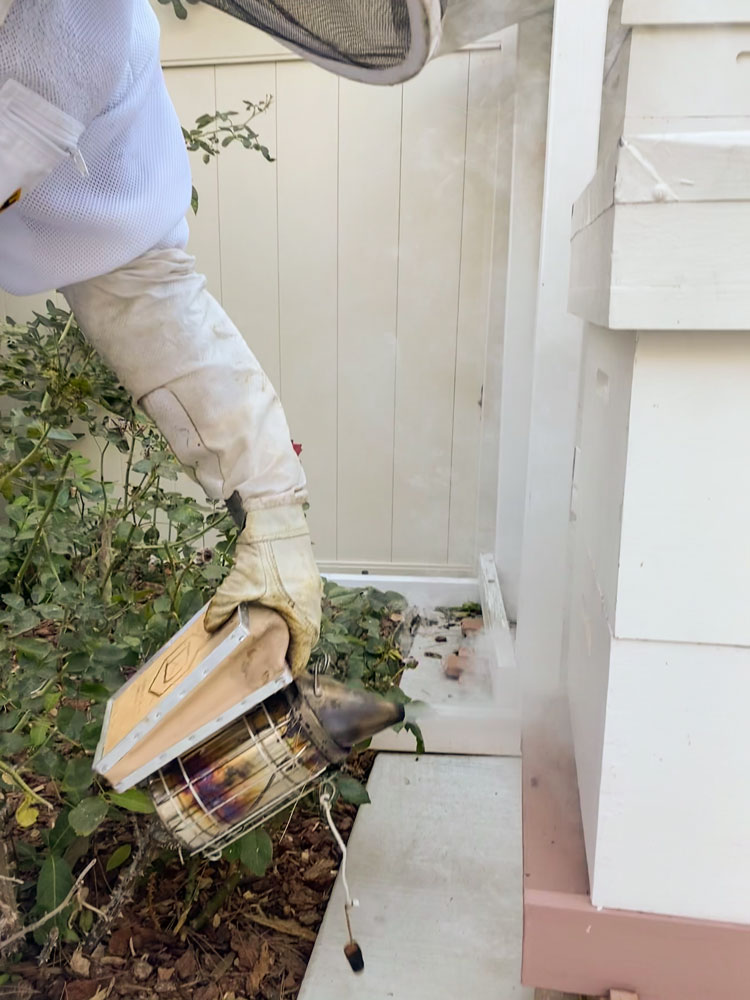
I don't wait a long time before going to the next step. I find that the smoke affects the hive fairly quickly so I then go and remove the telescoping cover - which doesn't expose the inside of the hive. Then, I pry the inner cover up and put some smoke under the cover.
This is a very docile hive so I probably wouldn't need to smoke under the cover. But for a more defensive hive this is a good idea. It drives the bees down into the hive so they aren't coming out (at you) when you open the inner cover.
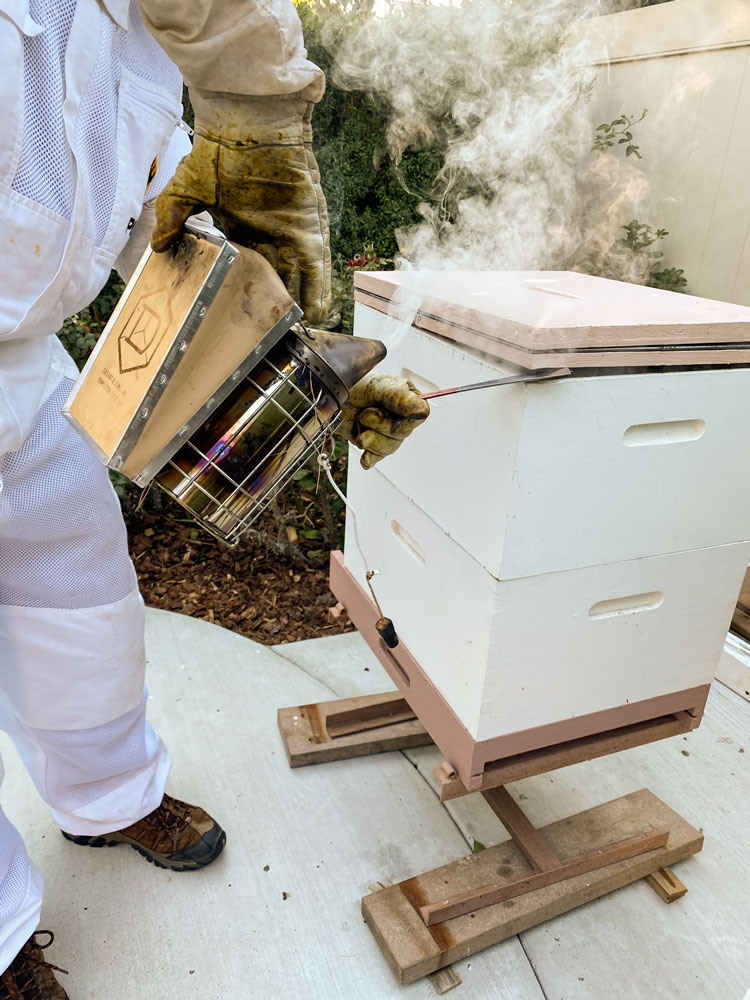
Usually, you can then do what you need to do without any more smoking. If the bees start coming up to the top of the frames, you can drive them down with a few puffs of smoke.
I have had situations (especially with more defensive hives) where the bees start pouring out of the top of the hive just as you're trying to replace the inner cover. Use the smoker to drive the bees back down and replace the cover. If you start killing bees by crushing them with the inner cover the dying bees will release an alarm pheromone and the bees will get agitated. Use smoke to keep the bees quiet and things will go better for both you and the bees.
No matter what fuel you use, you want to make sure the smoker is working while you're in the beeyard, so check it now and then. Stop and pump the bellows every now and then and make sure you still have smoke.
If you've been careful and kept the bees from getting agitated, they will recover from the examination fairly quickly. In a few minutes you'll see them going back to their regular routine.
But sometimes a hive will be agitated even before you enter the hive. When you find that a previously docile hive is acting very defensive, back off and wait until the next day. It doesn't happen very often but sometime a hive just has a bad day.
If they're very defensive the next day you may have a problem. Perhaps the queen was superseded and the new queen mated with drones from very defensive hives.
++++++++++++++++++++++++++++++++++
This completes the preliminaries - the equipment, the hive and how to get your smoker going. For beginning beekeepers, I suppose the next subject should be how to get your first colony of bees - so that's what I'll talk about next.
Click here to go to the discussion on collecting a colony of bees